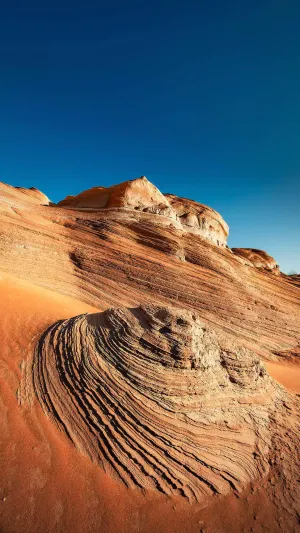The earth is a beautiful picture. In this picture, there are both endless plains and rolling mountains, there are endless rivers and lakes, and there are both mad deserts and crystal translucent glaciers ...
The earth has continuously changed its own appearance in billions of years. Under the common effects of many factors such as the crustary movement inside the earth and the external sunlight, rain, and wind, many beautiful landform environments were born, and many geological landscapes were also born.
There are six major landforms on the earth: glacier landforms, coastal landforms, Danxia landforms, karst landforms, volcanic landforms, and Yadan landforms. The first three types are introduced below.
Glacier landform is a landform shaped by glaciers, which belongs to climate landforms. About 11 % of the earth surface is covered by glaciers. It is mainly distributed in polar, medium and low latitude mountains and plateau.
Coastal landforms are the general name formed under the common action of crustal movement and climate factors. The continuous change of the ice period during the fourth period caused a sharp rise and fall of sea levels, resulting in continuous changes in the coast. 6000 to 7000 years ago, the sea level rose to the height equivalent to the modern sea level, forming the basic outline of the modern coast, forming a variety of coastal landforms.
Danxia landform: Danxia is a very important term in geography. It refers to the long -term weathering and flow erosion of red sandstone, forming an isolated mountain peak and steep strange rocks. It is the general name of the various strange peaks developed along the vertical section of red sandstone. Danxia landforms are mainly developed in the level of Jurassic to Third Period.
In the process of continuous growth, the earth also produces a series of geological structure movements. We can directly understand the geological structure as the deformation or displacement of it under the action of the crust. It is precisely because of the geological structure that different landforms are presented. Because of this, there will be plains and mountains and rivers on the earth. In this family of geological structure, the following two are more common:
1. Fracture structure: The stress of the rock is squeezed and deforms. When the rocks are squeezed by a certain strength, the rock rupture or even dislocates, causing the continuity of the rock layer to be destroyed. The breakthrough structure is mainly divided into joints and faults.
2. Tilt structure: The tilt structure refers to the tilt of the rock layer after the ground shell movement, so that a certain angle (5 degrees-85 degrees) appears in the rock layer and the horizontal plane. When the upper rock formation of a single tilt construct is harder, such a typical landform is formed.





